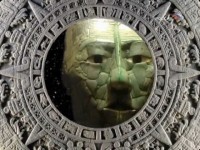
In 1925, explorer Percy Fawcett disappeared forever in the Amazon jungle while searching for the ancient city of El Dorado. Decades later, in the upper reaches of the Xingu River, in the very area where Fawcett disappeared, the semblance of a vast city—several villages connected by roads—was discovered.
A team led by anthropologist Michael Heckenberger of the University of Florida, having surveyed an area of 20,000 square kilometers, discovered 28 abandoned settlements and villages that could have housed 50,000 people. Large settlements were surrounded by a protective ditch 3 meters deep and 10 meters wide, and a wooden palisade, the length of which in some places reached 150 meters.
Civilization existed at this site for over 1,000 years, from 500 to 1600 AD. Numerous ruins, broken trails, broken pottery, rotted canoes, and fields of cassava (an agricultural crop that still makes up the lion's share of the diet of modern Brazilians)—this is the picture that met the researchers' eyes.
Such eco-villages are not at all uncommon. Independently formed in the jungle, their design is radically different from modern Brazilian cities like Rio de Janeiro or São Paulo, embracing the principle of maximum efficiency at minimum cost.
The main cause of their demise was the diseases brought by the Europeans. More than two-thirds of the inhabitants died as a result of these diseases; those who remained were unable to reorganize and fell under the onslaught of nature, which recaptured their previously lost positions.





